Preparing Dailies
Every day after shooting, you will either pick up or receive three different packages from three different locations. Your job will be to take this material and put it together in a way that everyone on the production can see their work from the previous day's shoot. Whether you all look at them together at a screening or individually on DVD, this material is called the dailies since it allows everyone to see their work on a daily basis.
From the telecine house, you will get the dailies and their accompanying paperwork. You will also get the sound files and their paperwork from the sound house. Finally, you will receive a copy of the script supervisor's notes from the production office. Every assistant starts at a different time, depending on when the film and track comes in, but during dailies you can count on starting anywhere between 7 a.m. and 9 a.m.
From the Telecine House
The paperwork that comes with the picture dailies HDV/DVCam tape should include the telecine report and the camera report (sometimes, the camera reports come from the production office rather than the lab). In addition, you should get a FLEx file, one for each tape roll of dailies. If there is anything wrong with the printed dailies, the customer contact person at the lab should give you a verbal report (a negative report). Often, the lab will have already notified the director of photography and, perhaps, the producer if there is something drastically wrong with the footage. However, for small scratches, dirt, or other minor problems, you may be the only one to know at this point. Be sure to determine if the problem is correctable.
The camera report you receive is written by the second assistant cameraperson on the set (see Figure 4.14 on the next page). It lists a lot of information helpful to the lab and a few useful tidbits for you. For starters, it shows everything shot the day before, camera roll by camera roll, including the scene number, set-up letter, and take number.
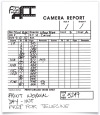
Figure 4.14 A camera report listing the first day's shoot for Silent Night, Silent Cowboy. Note that only certain takes are selected.
Takes that your director, Adam Free, selected for editing are circled on the report. These takes are also called printed takes after the old practice when only circled takes were printed to 35mm film from the negative. Today, they denote the takes the director wants transferred to video at the telecine house. Even if all the takes are going to be telecined (which often happens when the assistant editor is synching dailies rather than the telecine house), it is still good practice to circle takes because the studio may request to see only the director's preferred takes on their DVDs.
On top of the camera report, you'll find two pieces of important information: the shooting date (in this case Sept. 13, 2010) and the camera roll number (the cumulative count of rolls shot over the entire movie shoot; since this is the first roll shot on the first day it is called camera roll number one). Each camera roll takes up one or two sheets, depending on how many takes were shot on that roll. The camera report never includes data for more than one camera roll. If you are shooting with multiple cameras, the camera letter is usually added to the beginning of the roll number—the fifth roll from the "A camera" would be called A5, the twentieth from the "B camera" would be B20, for example.
After processing the original negative, a negative assembly person at the lab pulls out the negatives of the circled takes and strings them all together. The lab then puts these takes onto the roll of developed negative that is going to telecine to be transferred to tape. The remaining nonprinted takes—called B-negative—are stored for possible later use, usually at the lab.
In addition to the telecine, the camera reports, final tapes, and their FLEx files are sent to you. If you had the telecine house sync the dailies, it will also send you a sound report. If you will be synching dailies in the editing room, then the sound files (usually transferred onto a hard drive at a sound transfer house) and the sound report will be sent to you from somewhere. Long before the first day, figure out who will be sending the sound materials to you and when.
From the Sound Transfer House
The sound report is analogous to the camera report—it lists all recorded takes and indicates (by circling the take number) which takes you want. The takes should be the same ones listed on the camera report. It also lists the sound roll number (the cumulative roll number for the original quarter-inch tape reel the sound has been recorded on), the date of recording, and any special notes in the Remarks column (see Figure 4.15). It will also, typically, show what was recorded on each track of the files.
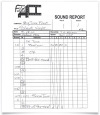
Figure 4.15 This sound report shows the sound takes made on sound roll number one along with the takes that were selected. It also shows what was recorded on each of the four tracks on the recorder.
The sound dailies arrive in any number of formats—but the most common is a BWF file (Broadcast WAV Format). Some sound reports list the starting time code of the recorder. Notice in Figure 4.15 that the recordists used three out of the four available tracks (columns 1 through 4) on his recorder. On the first, he created a mix of all the microphones in use. On the second, he recorded a clean version of the first boom mic, on the third track he put the second boom mic. He left the fourth channel empty. Some recordists use this track to record another track of the mix, but at a lower volume. That way, if the digital sound gets too loud and cuts out, there will be a lower-volume recording that might still be usable.
From the Production Office
Assistants also get daily paperwork from the production office. Generally, they will send you each day's call sheets (lists of every scene planned for shooting on that day, as well as the lists of cast and crew used) and any revised script pages. You will insert these revised pages into the editor's master script, and hang the call sheets on a clipboard or put them in a three-ring notebook.
The production office will send you several important pieces of paperwork from your script supervisor as well. One is called the editor's daily log, although your script supervisor may use other jargon. This log (see Figure 4.16) lists every picture and sound take the director selected in the order the takes were shot, which is the order you will normally be receiving them. It also lists camera and sound rolls as well as short descriptions of each setup. This information can be your guide as to exactly which picture and sound takes should be delivered to you. If there is anything missing, you can quickly order it and get it in time for the dailies screening.
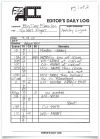
Figure 4.16 The editor's daily log, sent by the script supervisor, is the ultimate arbiter for what was shot and selected each day.
In the report, some script supervisors list everything that was shot and circle the selected takes. Others list only the selected takes. Find out what the script supervisor plans to send you and make sure that it is clear before the first day of shooting.
The final, but crucial, pieces of paperwork you will receive are the script supervisor's notes. These pages consist of the lined script, or script pages the supervisor has drawn lines on to denote just what lines are covered by which takes (see Figure 4.17 on page 52 and Figure 4.18 on page 53), as well as the script notes, Figure 4.19, on page 54. This paperwork, along with the editor's daily log, is often the only real link you have with the director.
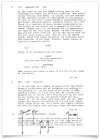
Figure 4.17 The first of two pages of lined script. Every piece of coverage is shown against the lines of dialogue and action they cover. The arrows at the bottom indicate that those setups continue on the next page.
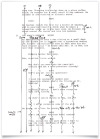
Figure 4.18 The second page of the lined script.
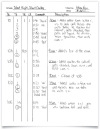
Figure 4.19 The script supervisor's notes page or facing page gives details of every take shot in scene order.
You will soon find that there are as many systems for script supervisors as there are for assistant editors. Every person seems to have his or her own paperwork form. Often, you will receive more paperwork than discussed here, some of which will be useful and some of it completely superfluous to your job. Familiarize yourself with the type of notes the script supervisor plans to send before shooting begins—they are all interesting, but you won't have a lot of time to peruse them during the busy synching period.
Insert the lined script pages into a three-ring binder, and place the notes pages opposite them so that they face the page of the script where the coverage begins.
When you receive all this paperwork, the first thing you need do is to compare it to make sure everything that was supposed to be printed was actually printed. You may be surprised to find out how often things go wrong, either because the second assistant camera person or assistant sound person didn't circle the proper takes, or because the lab or sound house made an error. If there is any discrepancy, you should immediately call the telecine or sound house to get it corrected.
Up until now, you've done a lot of paper pushing and haven't even touched the dailies. Finally, you can do that (about time, huh?). Assuming that the last of the paperwork arrived by 8:30 a.m. (something that almost never happens, but let's make believe), by 9:15 you should have had your morning coffee, chatted with the crew of the film down the hall, checked out all the paperwork, and are now ready to proceed.
Let's sync the dailies.